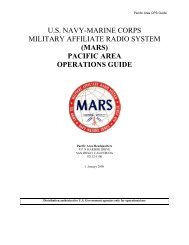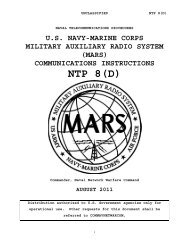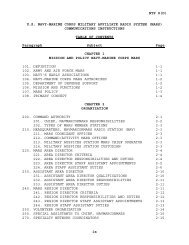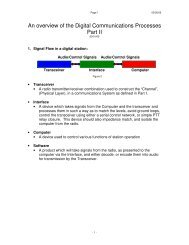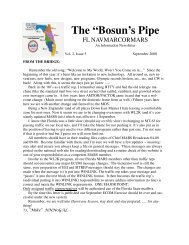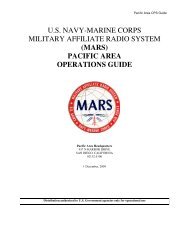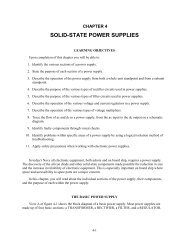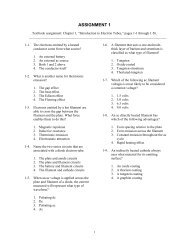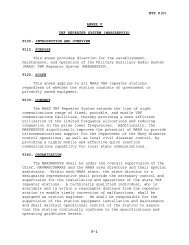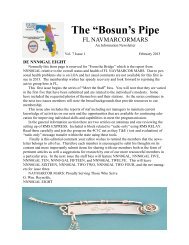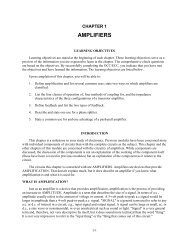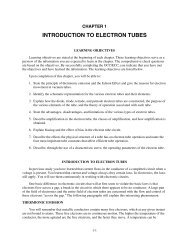You also want an ePaper? Increase the reach of your titles
YUMPU automatically turns print PDFs into web optimized ePapers that Google loves.
The same amount of current must always be used to deflect the pointer to a certain position on thescale (midscale position, for example), regardless of the multiplication factor being used. Since themultiplier resistors are of different values, you must always "zero" the meter for each multiplication scaleselected. When selecting a range on the ohmmeter, select the one that will result in the pointer coming torest as close to the midpoint of the scale as possible. This will enable you to read the resistance moreaccurately because scale readings are more easily interpreted at or near midpoint.The MegohmmeterAn ordinary ohmmeter cannot be used for measuring multimillion ohm values of resistances, such asthose in conductor insulation. To test for such insulation breakdown, you need to use a much higherpotential than that supplied by the battery of an ohmmeter. This potential is placed between the conductorand the outside of the insulation. A megger (megohmmeter) is used for these tests. The megger, shown infigure 3-15, is a portable instrument consisting of two main elements: (1) a hand-driven dc generator,which supplies the necessary voltage for making the measurement, and (2) the instrument portion, whichindicates the value of the resistance you are measuring. The instrument portion is of the opposed-coiltype, as shown in view A. Coils a and b are mounted on movable member c. A fixed angular relationshipexists between coils, and they are free to turn as a unit in a magnetic field. Coil b tends to move thepointer counterclockwise, and coil a tends to move it clockwise.Figure 3-15.—Megger internal circuit and external view.Coil a is connected in series with R3 and unknown resistance R x . The combination of coil a, R3, andR x forms a direct series path between the + and − brushes of the dc generator. Coil b is connected in serieswith R2, and this combination is also connected across the generator. Notice that the movable member(pointer) of the instrument portion of the megger has no restoring springs. Therefore, when the generatoris not being operated, the pointer will float freely and may come to rest at any position on the scale.3-21



